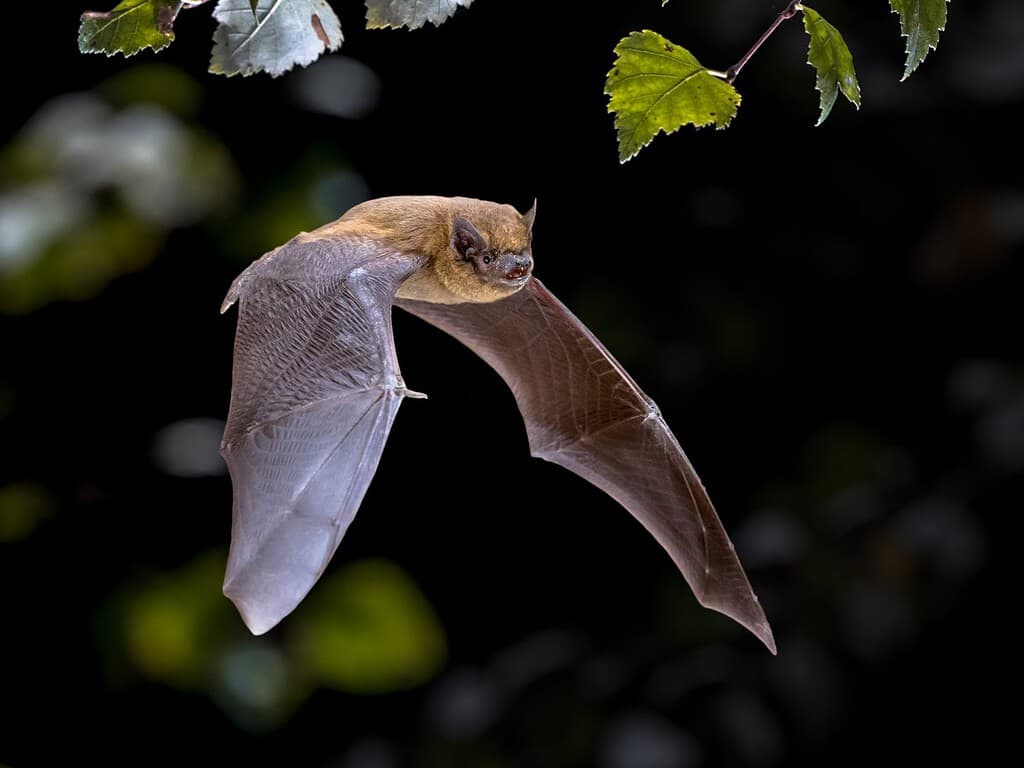For many, the natural world is one of the best parts of life. However, even self-described “animal lovers” keep their distance from animals carrying rabies. While almost any animal can contract this disease, certain mammals are more likely to be carriers than others. If you spend a lot of time out in nature, it’s important to educate yourself on which creatures are the most likely candidates and know what signs to look for to discern if the animal is infected. Let’s discuss four animals across the globe that are the most likely to carry rabies.
1. Raccoons

The scientific name of raccoons is
Procyon lotor.
©EEI_Tony/iStock via Getty Images
When you think of rabies, chances are raccoons are one of the first animals to come to mind. This is for a very good reason, as raccoons make up roughly 30 to 40 percent of total rabies cases. Identifying a rabid raccoon is easy, as they display various forms of abnormal behavior. Raccoons are famous for their sweet, curious personalities. While some might be shy and aloof, many others are friendly with humans, especially if there’s food being exchanged.
However, an infected raccoon may appear to be disoriented or sick. A telltale sign to look out for is foam at the mouth. As this disease progresses, animals have increased difficulty navigating, so walking and breathing may appear labored. However, rabid raccoons can also be unusually aggressive and attack with no warning. If you suspect a raccoon you’ve encountered is rabid, call your local wildlife authority.
2. Bats

Although bats account for most human deaths caused by rabies, only about one to three people per year suffer this fate, making it extremely unlikely.
©Rudmer Zwerver/Shutterstock.com
Bats are curious creatures who have long been the subject of mystique and intrigue. However, they’re also one of the most likely carriers of rabies. According to the Centers for Disease Control, “Bats are the leading cause of rabies deaths in people in the United States. Rabid bats have been found in all 49 continental states. Only Hawaii is rabies-free.”
Unlike raccoons, it might be more difficult to discern whether or not a bat has rabies. However, a bat spotted outside during the daytime or one who seems to be unable to fly might be cause for concern. Because bats are the number one cause of rabies deaths in humans, it’s important to seek medical attention immediately if you suspect you’ve come in contact with one.
3. Skunks

Unfortunately, there is no known cure for rabies at this time. Many animals who contract this virus will only live for about a week or so.
©Frank Fichtmüller/iStock via Getty Images
Surprisingly, skunks are one of the most prolific carriers of the rabies virus. In fact, they trail just behind raccoons and bats, and roughly 25% of all cases of rabies are attributed to these animals. Identifying a sick skunk is similar to identifying a sick raccoon. They may have difficulty navigating, foam at the mouth, breathe heavily, or act unusually aggressive. Although it might be strange to see a skunk during the daytime, this isn’t an indicator of whether or not it will have rabies. Instead, try to look for other strange behaviors coupled with daytime activity.
However, it is important to note while these signs are indicative of something amiss, they aren’t necessarily cut-and-dried evidence a skunk has rabies. The only way to confirm for sure an animal has contracted this disease is to perform an autopsy. However, it’s better to be safe than sorry, so if you suspect a skunk you encounter might be infected, keep your distance and contact your local wildlife authority immediately.
4. Foxes

Do not try to run away from a rabid animal. Instead, back up slowly so as to not alarm or excite the animal.
©Peter Clayton Photography/iStock via Getty Images
Although foxes might seem cute and goofy, it’s best to keep your distance from these wild animals as they may carry rabies. Even though foxes aren’t as likely to carry this disease as raccoons, bats, or skunks, they still make up a large proportion of rabies cases. The same signs that individuals observe in sick skunks and raccoons will be present in foxes as well. Excessive drooling or foaming at the mouth, abnormal activity, labored movement, heavy breathing, and extreme aggression are all strong signs a fox is rabid.
Because rabid animals have the potential to become aggressive at the drop of a hat, the most important thing you can do to protect yourself is stay far away. Do not try to touch or help the animal. Remember, even the smallest contact with a rabid animal can result in infection. Protecting yourself and others around you is what’s important. Unfortunately, there isn’t a cure for this disease in the present day. The best thing you can do for the animal is to call the proper authorities and seek professional help.
Thank you for reading! Have some feedback for us? Contact the AZ Animals editorial team.








